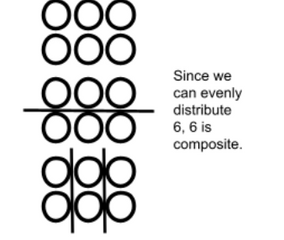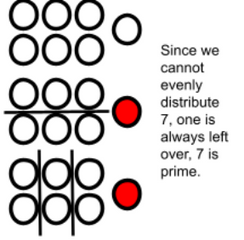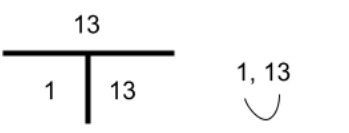Example: 2 3 5 7 ← prime numbers/factors
2 x 2 = 4
2 x 3 = 6 ← you can get to these numbers by
2 x 2 x 2 = 8 multiplying two prime factors/numbers
3 x 3 = 9 together
How can we use the concept:
There are two ways you can identify if a number is prime or composite:
1. You can draw the number of dots for the number you are working with. You can then try to distribute them into even groups. If it can be distributed evenly among the groups, it will be composite. If it cannot, it will be prime. This concept can be used for lower grades who are not as familiar with factors and divisors; or students who are still working through their division facts. This method should be used sparingly, but would be a good way to introduce the topic to students.
Examples:
The number 6

b. The number 7

2. Identify the factors of the given number. If there are more than 2, or more than just 1 and itself, it will be composite. If it is just one and itself, it will be prime. This strategy is faster and more reliable.
Examples: a. The number 12

b. The number 13





